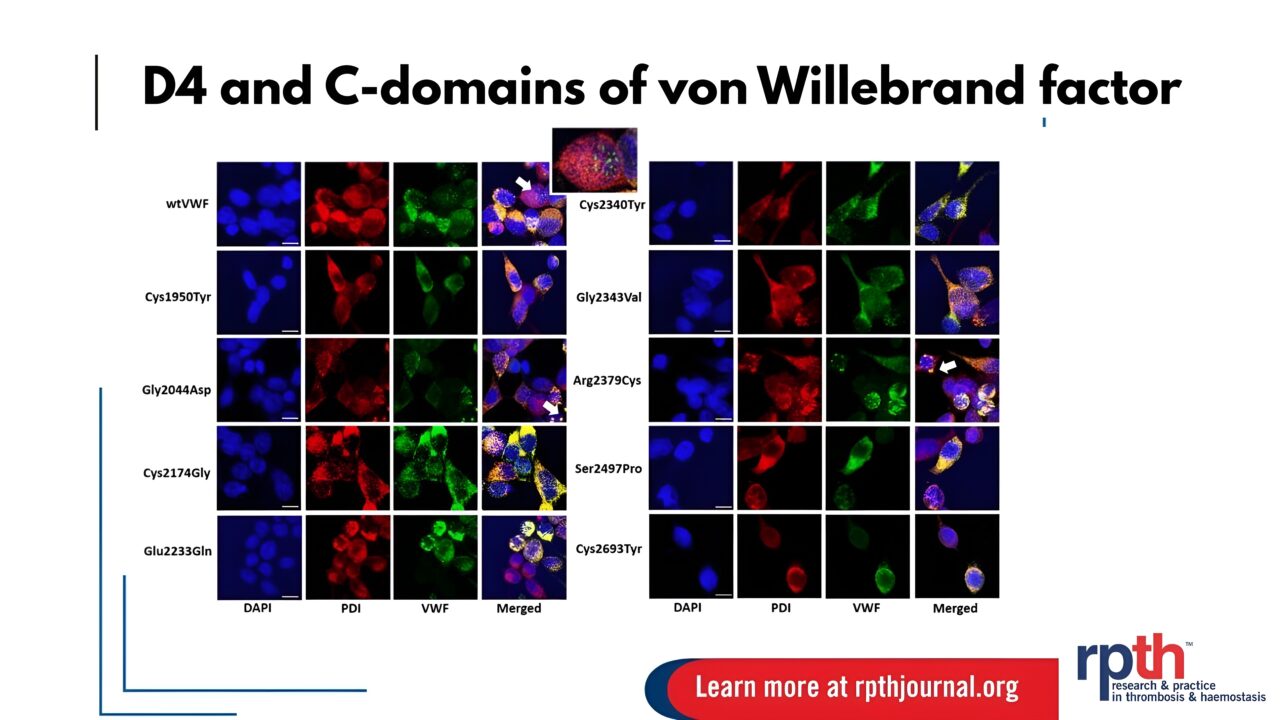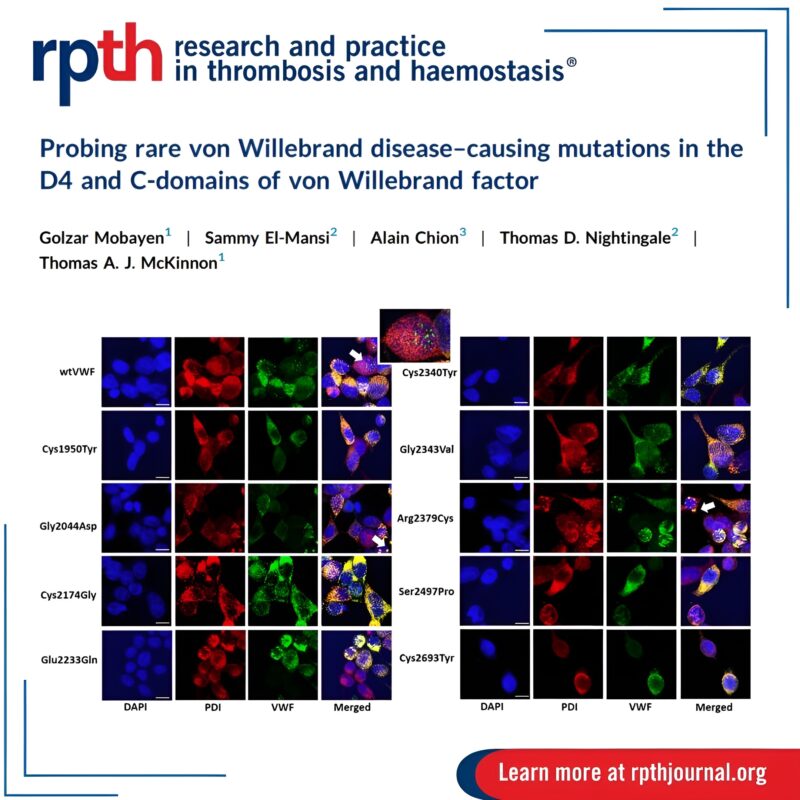
C-Terminal VWF Variants in von Willebrand Disease: Functional Insights from the D4-C6 Domains
The RPTH Journal (Research and Practice in Thrombosis and Haemostasis) shared an insightful post on LinkedIn:
”A small panel of VWF variants were investigated for expression and function – and how they might cause Von Willebrand Disease.
Golzar Mobayen and team reveal that the D4 and C-domains of VWF might play a role!
Other Authors: Sammy El-Mansi, Alain Chion, Tom Nightingale, and Tom McKinnon.”
Read the full article here.
The ”Probing rare von Willebrand disease–causing mutations in the D4 and C-domains of von Willebrand factor” study published by Golzar Mobayen et al. in the RPTH Journal, sheds light on the possible roles of vWF C-terminal D4-C6 domains in development of VWD.
Von Willebrand disease (VWD) arises from quantitative or qualitative deficiencies in von Willebrand factor (VWF), with a broad spectrum of genetic variants contributing to disease pathology.
However, mutations within the C-terminal D4-C6 domains of VWF remain under-characterized.
The findings demonstrate that variants in this region can significantly impair VWF expression and function.
Furthermore, the phenotypic impact varies depending on zygosity, with distinct differences observed between homozygous and heterozygous states.
These insights underscore the importance of the VWF C-terminal domains in maintaining normal hemostatic function.

All the latest scientific advancements on bleeding disorders featured in Hemostasis Today.
-
Oct 27, 2025, 05:47Ahmed Koriesh on The Novel Approach in Use of Tenecteplase
-
Oct 27, 2025, 04:42Louise Breslin: Exciting Results in The CRYPTICS Trial
-
Oct 26, 2025, 16:55ECTH 2025: 3 Unforgettable Days of Science and Shared Purpose
-
Oct 26, 2025, 16:35Ahmed Koriesh on Thrombolysis in Stroke Patients on DOACs
-
Oct 26, 2025, 15:39Lisa Murphy on Life After Stroke Sessions at WSC 2025
-
Oct 27, 2025, 08:01Acquired Hemophilia A (AHA) is Rare and Often Missed - RPTH Journal
-
Oct 27, 2025, 05:00Wolfgang Miesbach on WFH Guidelines Covering FDA/EMA-Approved AAV Gene Therapy for Hemophilia
-
Oct 26, 2025, 15:04Nita Radhakrishnan and Colleagues on Inherited Haematological Conditions
-
Oct 26, 2025, 14:55Anirban Sen Gupta on Biosynthetic Blood Surrogates Current State-of-Art
-
Oct 26, 2025, 12:24Jean Philippe Galanaud, Jean Pierre Laroch, and Marc Righini on Historical Treatments of DVT
-
Oct 25, 2025, 07:42Adithya Hande: India’s Silent Killer and a Scientific Breakthrough
-
Oct 23, 2025, 09:57Arun V. J: Artificial Blood Is Closer Than You Think
-
Oct 23, 2025, 07:11Sebastien Lobet Presented the ACTIVLIM-Hemo Scale
-
Oct 23, 2025, 07:05Syed Ehsan Shah on Advantages of Werfen HemoCell Automation
-
Oct 22, 2025, 08:25Johanna Nystedt: Not Every Day We Can Release a New Blood Product to Meet An Unmet Medical Need!
-
Oct 27, 2025, 08:00Rohit Gosain: Revumenib is Now FDA Approved for R/R AML with NPM1 Mutation
-
Oct 27, 2025, 06:30Andres Ricaurte Fajardo on CVT Experience from a Latin American Cohort
-
Oct 27, 2025, 05:15Love Preet Kalra: I Had The Pleasure of Meeting Future Leader Sarah Matuja
-
Oct 25, 2025, 09:32Sylaja Pn Wins 2025 WSO Presidential Award
-
Oct 25, 2025, 08:21Courtney Lawrence: Listen. Empower. Deliver. Save Lives!
